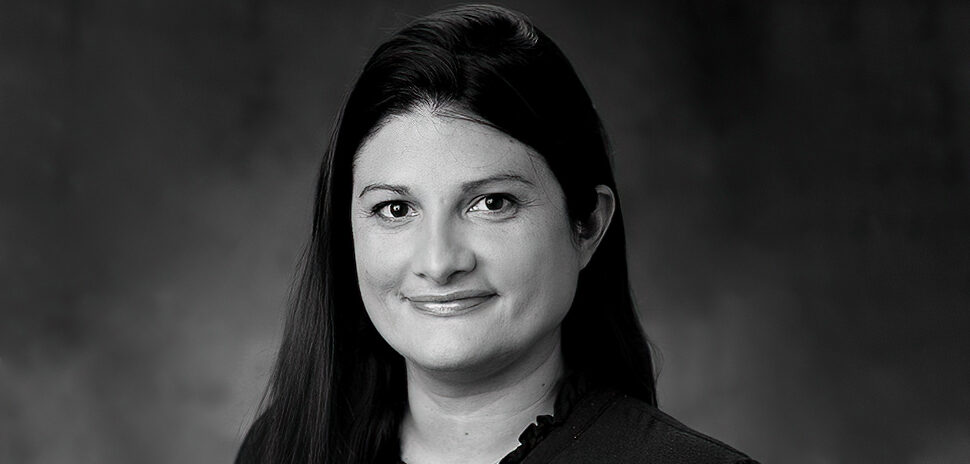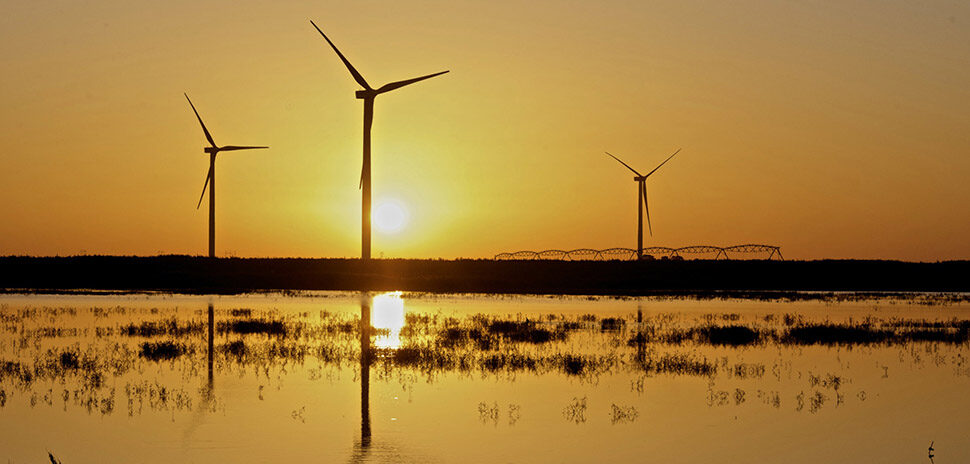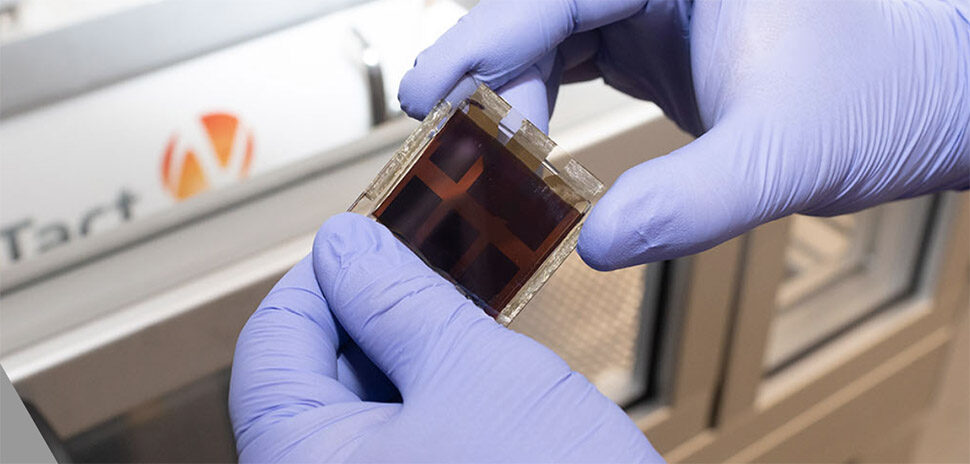One big answer to renewable energy? It’s over your head. The rooftop wind market leverages the wind atop buildings to power offices and systems below. That’s the specialty of Dallas-based Hover Energy, whose patented 36kW wind turbine microgrids are heading to the U.K. in a new partnership.
Hover Energy announced today that it’s partnering with U.K.-based Task Contract Solutions, which will be its exclusive partner in the sale, installation, and support of Hover’s wind-powered microgrids in the U.K.
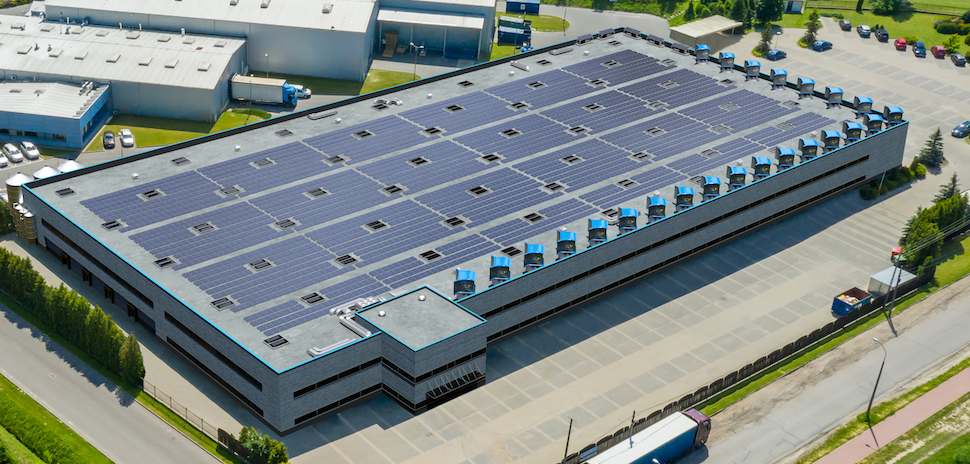
Hover’s microgrid system combines rooftop wind turbines and solar arrays. [Iimage: Hover Energy]
The size of a 10-foot shipping container, it complements solar
Unlike giant pinwheels on tall towers, Hover’s rooftop model looks more like an industrial air conditioner. The box-like structure has two sides open to the air, with a vertical-axis turbine that captures wind. But it’s just part of Hover’s microgrid solution.
Hover designs, develops, and deploys wind-powered, “islanded” microgrids that combine both wind and solar energy generation—enabling companies to reduce their carbon footprint by generating green energy onsite.
“While solar is a useful contributor of clean energy, companies have learned through experience that solar alone won’t get them all the way to net zero,” Hover says on its website. “Those that have covered their rooftops with solar panels may reduce their reliance on the grid by 20%, or in rare cases, 30%, but for those seeking to generate closer to 80-100% of their power needs onsite, a Hover microgrid, which generates clean energy 24 hours a day, is the best solution.”
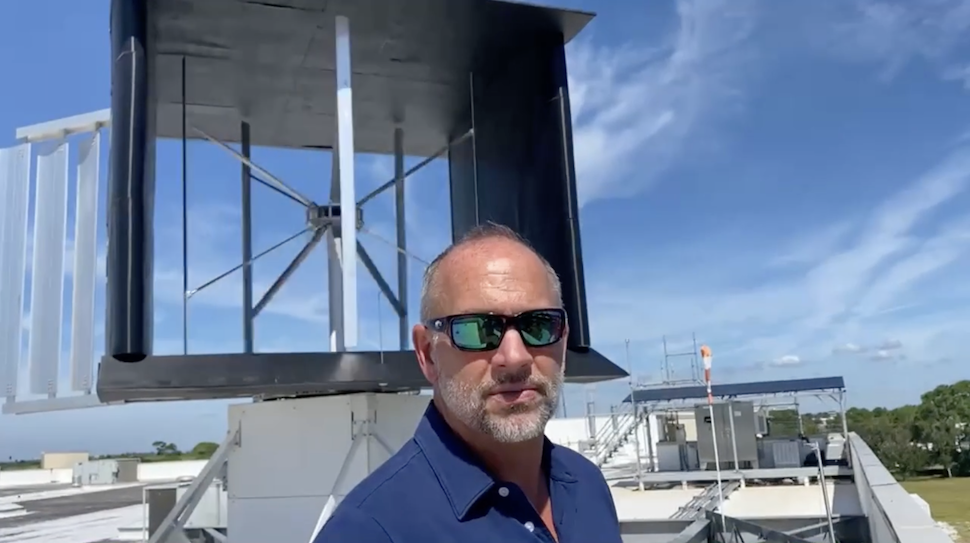
Hover Energy president and co-founder Christopher Griffin with one of his firm’s rooftop wind turbines. [Video still: Hover Energy]
Hover turbine draws in and accelerates wind
The centerpiece of Hover’s microgrid is the wind turbine seen above. Installed in an array on the windward edge of a building’s roof, the turbine’s aerodynamic design draws in and accelerates wind. A direct drive generator reduces friction and lowers the cut-in speed, while an adjoining solar array complements the turbines—generating power during daylight hours.
Energy captured by both sources is directed to an Integrated Energy Management System (IEMS), where the energy is combined, conditioned, and converted to three-phase AC power. The IEMS connects directly to the building management system, helping to power the building’s electricity needs.
Excess power—including unused power generated at night by the wind turbines—can be stored in batteries for later use.
When all three elements are combined—the wind turbines, the solar array, and the battery system—Hover’s wind-powered microgrid can potentially offset 100% of a building’s power consumption.
That can change how we view the future of power, says Christopher Griffin, Hover’s president and co-founder.
“What makes our solution so powerful is that it’s a distributed microgrid, which puts power in your hands, not at the control of somebody else,” Griffin says in a company video. “Solar, wind, and storage in a distributed microgrid installation is really the key structure for changing the way we think about power.”
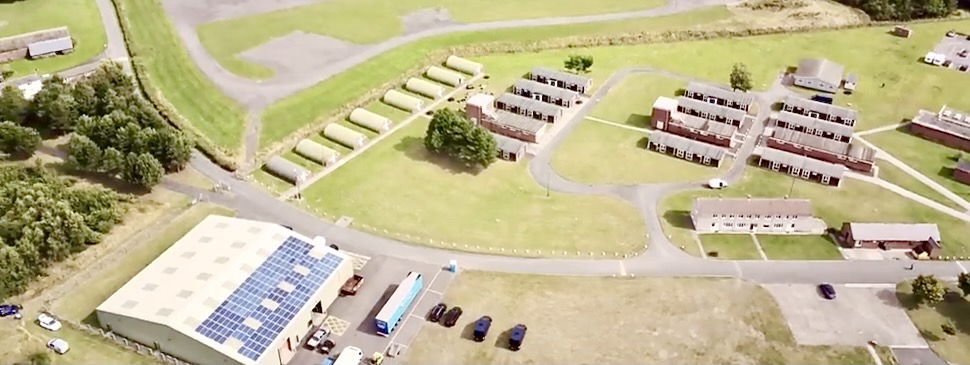
Altcar military training base in the U.K. [Video still: Task Contract Solutions]
Next stop for Hover will be U.K.’s Altcar military training camp
One of the U.K. sites where Hover’s system is headed is the Altcar military training camp, partially seen above from the air. The camp has 709 beds, 110,000 “heads on beds” a year, plus another 12,000 people who come and go without sleeping overnight.
Task Contract Solutions has already installed a solar power system at the camp, which helps power buildings along with electric-vehicle charging points—enabling both vehicles and buildings alike to run on sunlight. Now Task will install Hover’s wind turbine microgrid system as well.
Combined with the existing solar system, Hover’s microgrid solution “will take us 90%-plus off the grid,” said Ian MacVicar, managing directorTask Contract Solutions, in a video released today.
Griffin says the camp is an ideal proof point for his companies’ offering.
“Part of the real value proposition that Hover brings to the table today is the integration of multiple sources of power,” Griffin said in the video. “whether it comes from wind or comes from solar or comes from battery storage. When you can create more power that you need, then you become a contributor. That’s one of my favorite things about the Altcar base. We’re going to produce more than we need and we’re going to start contributing back to the environment around us.”
“They’re about to take this entire base off the grid,” he added. “That’s pretty impressive. If everybody were off the grid then you wouldn’t need centralized power that’s coming from really damaging resources like fossil fuels. And if every person did their part, then we could get there quickly.”

Hover Energy wind turbine 3.0 demo. [Video still: Hover Energy]
Quiet operation
Hover’s wind turbines operate fairly silently and have a unique blade design.The spokes in the turbine have the same profile as the blades—something unusual in the industry, the company says. They reduce drag as the turbine is spinning. The advanced aerodynamic design creates efficiencies Hover says are unmatched in the rooftop wind market—without causing noise that bothers the neighborhood.
“Most turbine rooms you’re wearing earplugs and ear muffs on top because the decibel level is above 200,” says an engineer in one company video, whose expertise includes vibrational analysis and balancing. “I’d estimate that the decibel level on [the Hover wind turbine] is less than 50, which is normal conversation level.”
Founded in 2015, Hover has 22 patents and counting
Founded in 2015 with offices on Turtle Creek Boulevard in Dallas, Hover has been issued or allowed 22 U.S. and international patents, with more than 32 currently filed.
The company’s microgrid design creates what Hover calls “a multiplicative effect,” increasing the efficiency of all the units in its system, which “can often produce a multiple of the power per square foot than any other rooftop renewable energy solution, including solar.”
![]()
Get on the list.
Dallas Innovates, every day.
Sign up to keep your eye on what’s new and next in Dallas-Fort Worth, every day.


